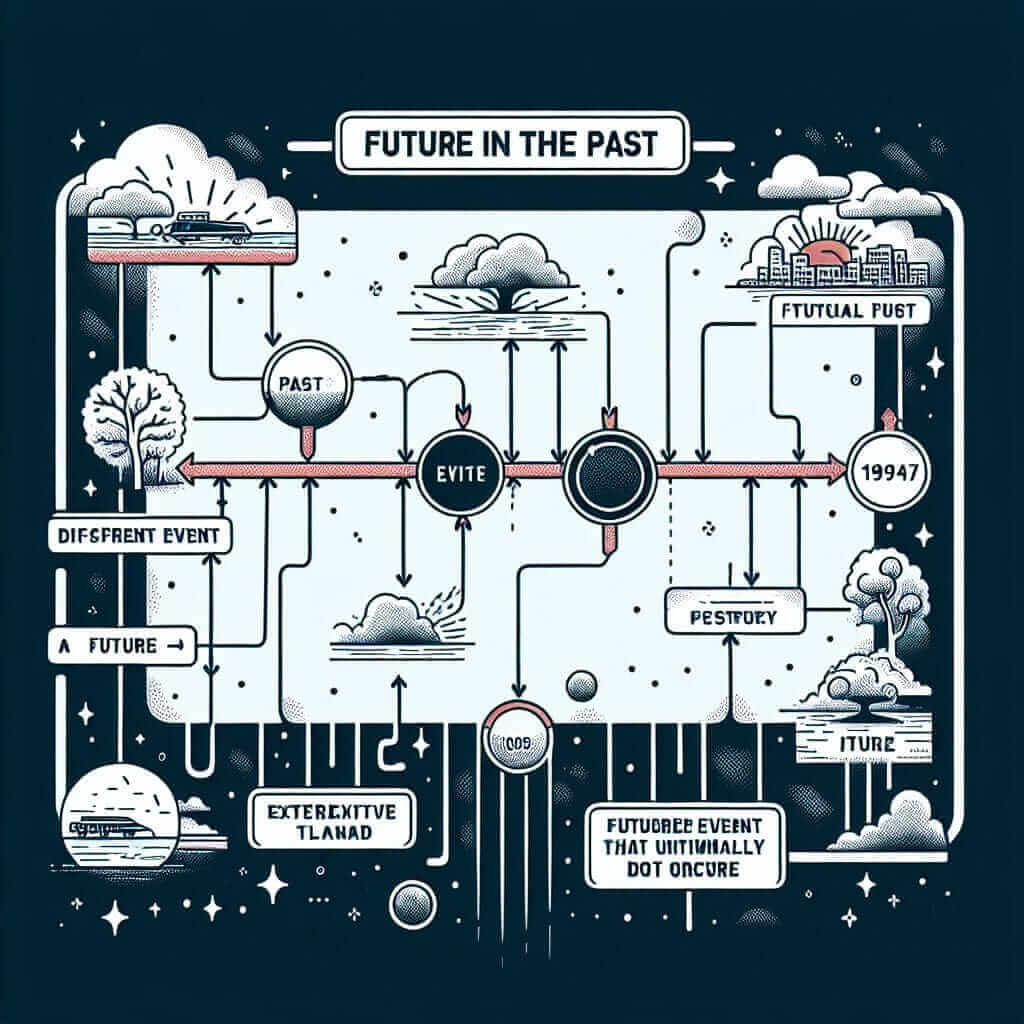In the realm of English grammar, expressing the future from a past perspective can be tricky. You might find yourself needing to articulate an action that was planned or expected to happen after a specific moment in the past. This is where the concept of “future in the past” comes into play, and mastering it can significantly enhance your IELTS score.
Let’s illustrate this with a few examples tailored to different sections of the IELTS exam:
- Speaking (Part 2): “For my birthday, my parents were going to take me to Italy, but unfortunately, the trip got cancelled.”
- Writing (Task 1): “The graph shows a sharp increase in online sales that was projected to continue into the following year.”
- Listening (Section 3): “The professor explained that the research team had hoped to publish their findings by December.”
In each of these scenarios, the highlighted verbs indicate an action that was intended, predicted, or anticipated to occur in the future when viewed from a specific point in the past.
Deciphering the “Future in the Past”
The “future in the past” is a grammatical construction used to describe an event or action that was expected or planned to happen in the future, but viewed from a point in the past. It often implies that the planned event did not happen, was interrupted, or the expectation was incorrect. Mastering this tense not only refines your grammatical accuracy but also enables you to express a nuanced timeline of events in your writing and speaking.
Construction and Application Across IELTS
Let’s break down the formula for using the “future in the past” effectively:
Structure: Was/Were + Going to + Base Form of Verb
Applications:
- Speaking: Use this structure when narrating past events, especially when describing plans that didn’t materialize or expectations that weren’t met. For instance, you could say, “I was going to study abroad after graduation, but then I got a job offer I couldn’t refuse.”
- Writing (Task 1): When analyzing trends in graphs or charts, you might need to describe projections or expectations for the future based on past data. For example: “The data suggested that unemployment rates were going to fall in the following quarter.”
- Writing (Task 2): When presenting arguments, you can use this structure to discuss potential outcomes or consequences based on past actions or decisions. For example: “The government’s decision to invest in renewable energy was going to have a positive impact on the environment in the long run.”
Mastering “Future in the Past” with Examples
Here’s how you can effectively incorporate this grammatical structure into different sections of the IELTS:
Writing (Task 1):
“The line graph illustrates the projected growth of smartphone users worldwide from 2010 to 2025. The number of users was predicted to reach 2 billion by 2018, and this trend was expected to continue, with estimates suggesting a further increase to 4 billion by 2025.“
Speaking (Part 2):
“Describe a time you planned something that didn’t go as expected.
…So, for my friend’s birthday, we were going to have a surprise party at her favorite restaurant. We had everything organized – the decorations, the cake, even a playlist of her favorite songs. But on the day, a huge storm hit our city, and the restaurant had to close because of a power cut. We were so disappointed, because we had put so much effort into it. In the end, we just ordered pizzas to her apartment and had a more low-key celebration. It wasn’t what we had planned, but we still had a good time.”

Taking it a Step Further
While “was/were going to” is the most common way to express the “future in the past,” there are other structures you can use to showcase a wider range of grammatical knowledge and fluency:
- Past Perfect Continuous + Infinitive (to + base form of verb): This structure emphasizes the duration of an intended action. Example: “They had been planning to move to Australia for years before they finally took the plunge.”
- “Was/Were to + Base Form of Verb”: This implies a more formal or scheduled event that was planned. Example: “The Queen was to visit the newly opened hospital that afternoon.”
Avoiding Common Pitfalls
A common mistake learners make is confusing the “future in the past” with the simple past tense. Remember, the “future in the past” focuses on an action that was intended or expected to happen after a point in the past, not an action that actually happened.
Incorrect: “I was going to the store yesterday, but I decided to stay home.”
Correct: “I was going to go to the store yesterday, but I decided to stay home.”
Conclusion
The “future in the past” is a powerful tool for achieving grammatical accuracy and expressing complex timelines in your IELTS exam. By understanding its construction, practicing its application, and exploring alternative structures, you can significantly boost your score and communicate your ideas more effectively. Remember to pay attention to the context, use a variety of structures, and avoid common errors to demonstrate your mastery of this essential grammar point.